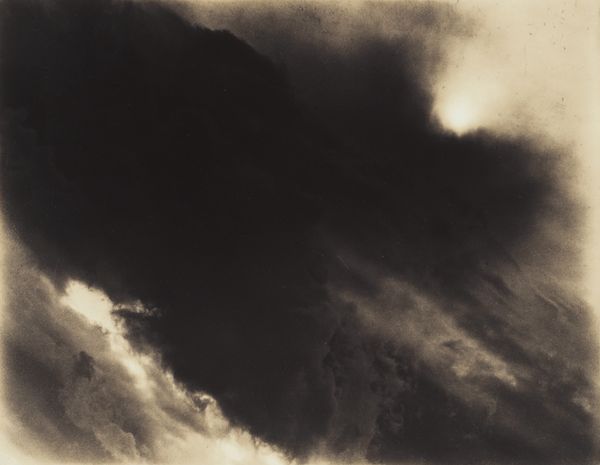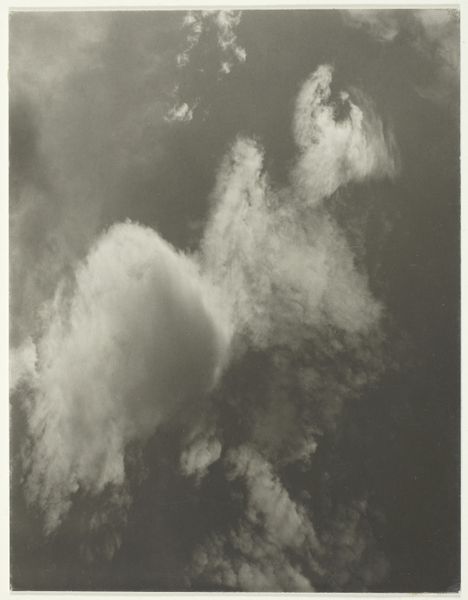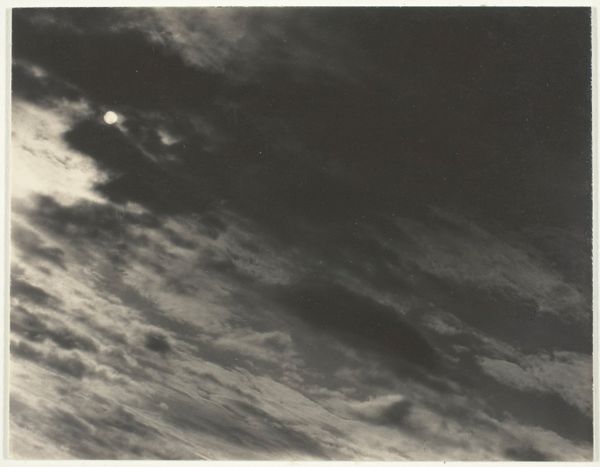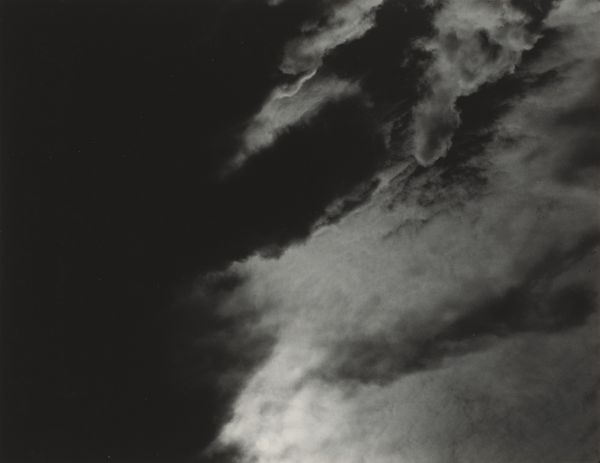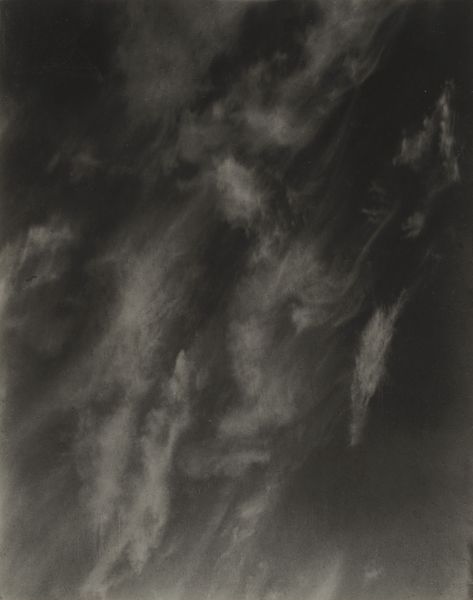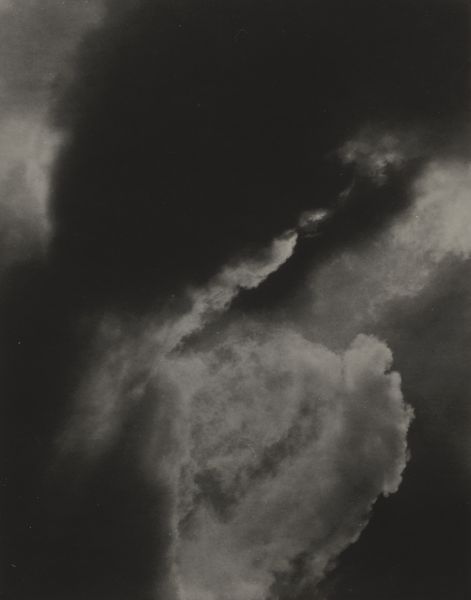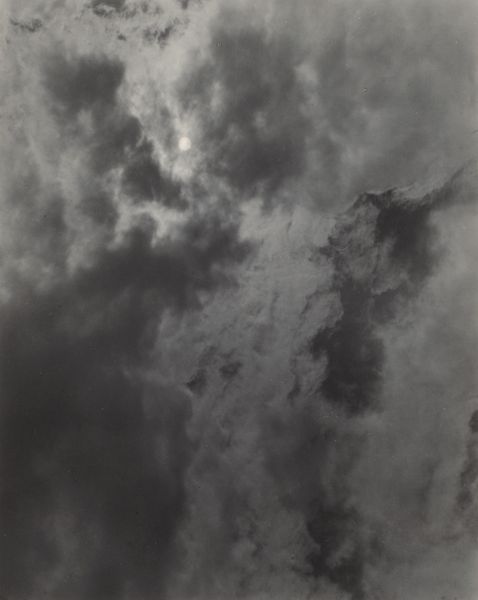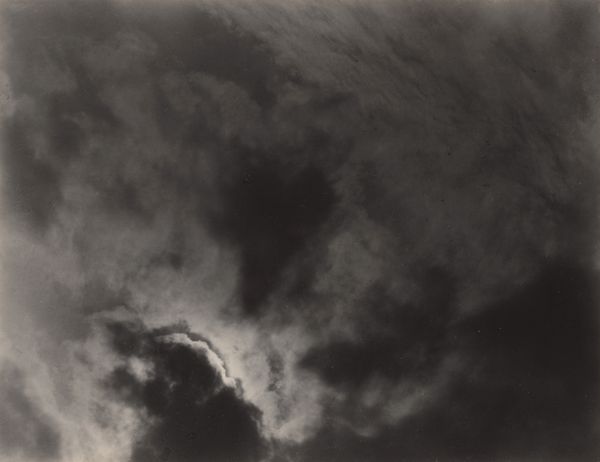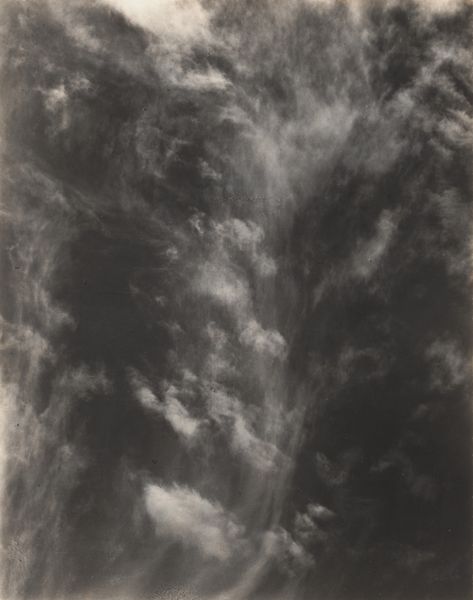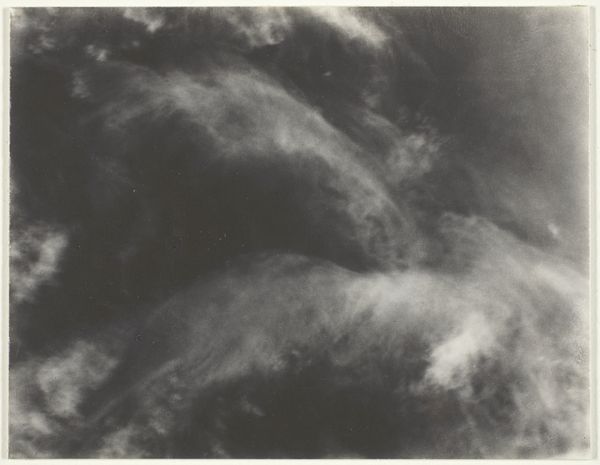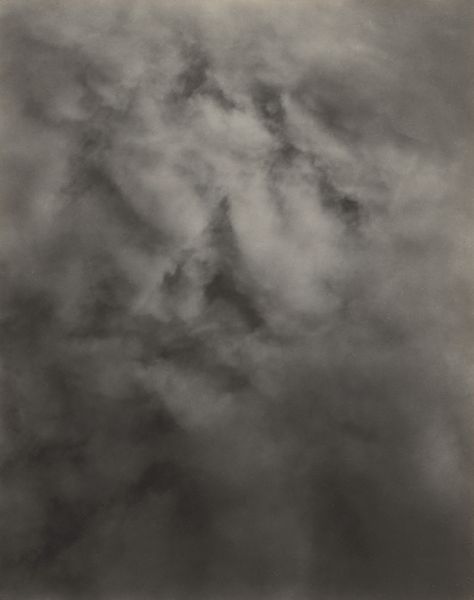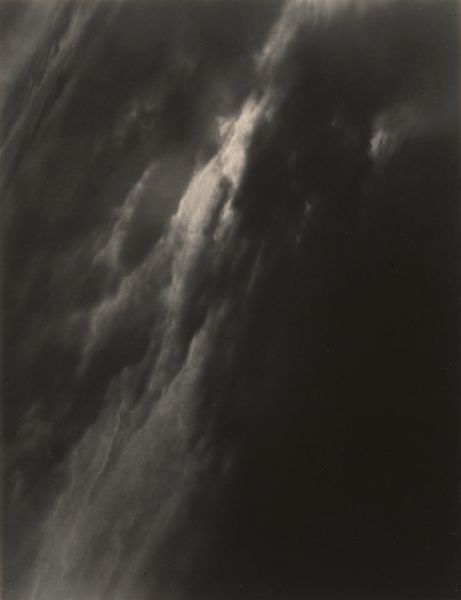
Dimensions: 9.4 × 11.9 cm (image/paper/first mount/second mount); 35 × 27.7 cm (third mount)
Copyright: Public Domain
Curator: Welcome. Before us is “Equivalent,” a striking silver print on paper from 1930, crafted by Alfred Stieglitz. Editor: The immediate sensation is dramatic. It's a study in chiaroscuro—those cloud formations looming, almost gothic in their darkness, against the bursting white light. Very impactful. Curator: Stieglitz, as you know, sought to elevate photography to the status of fine art, to prove its capacity for expression beyond mere documentation. The “Equivalents” series, of which this is a part, abandons representational subject matter, instead using clouds as vehicles for emotion, pure feeling. Editor: The timing is significant too. This was produced in the aftermath of World War I, amid a shifting social and political landscape. Could these roiling skies represent a nation, or perhaps a world, in turmoil? Are the clouds then metaphors of inner, existential struggles? Curator: It's tempting to ascribe direct symbolism, but I believe that is where Stieglitz resisted. He declared that these cloudscapes were equivalents of his state of mind, not illustrations of specific ideas, they are self-portraits. Consider the way the light falls; the composition divides the image almost into abstract shapes rather than recognizable cloud formations. Editor: That certainly makes sense considering his deep interest in abstract modernism. Yet it's impossible, I think, to divorce this work from the historical context of the early 20th century in the United States. The rise of skyscrapers, rapid industrialization—these “sky-scapes” present the immensity of change of American society. Stieglitz frames not merely meteorological phenomena but something of an American sublime. Curator: The dynamism here isn’t just a result of circumstance, however, the dynamic range within the gray scale pushes us to appreciate the sheer range that he achieves, as a photographer, with his print and darkroom techniques. It's technically astonishing, and structurally compelling, however, framed, and installed here. Editor: It is fascinating to see how, even without a narrative or portrait, a work of art can become an entry point for discussing not only aesthetic concerns, but cultural shifts. It gives one much to think about, in regards to our collective history. Curator: Indeed. A work to look at with eyes, head, and heart.
Comments
No comments
Be the first to comment and join the conversation on the ultimate creative platform.
